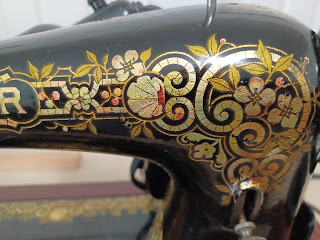In my last post, I introduced my "newest" (yet oldest) Singer 15 ~ a Singer 15 manufactured in 1921.
This wasn't my first Singer 15. My other Singer 15 I own I posted about a while ago. The other Singer 15 is known as a Singer 15-91 and it was made in 1953.
Let's play "Spot the Difference":
On the left, you see a tuck marker attachment that came with one of my other machines, on the right is the one that came with the '21 Singer 15. Sadly, it's missing a critical part (the left-most bar), so it's not exactly useful except as spare parts for my "good" one.
But wait, there's MORE!!
Addendum
The bobbin cases for both machines. The one on the LEFT is the 1953 Singer 15-91's bobbin and the one on the right is the 1921 Singer 15's bobbin.
THEY ARE MIRROR IMAGES OF EACH OTHER!!
So you have to thread the bobbins and the needles in opposite directions.
After discovering this difference, I checked ALL of my machines and put a note in each machine's case showing the direction that the bobbin has to face for threading and which way to thread the needle (left to right, right to left, or front to back). I think Singer reversed the machine because so may right handed people complained that it was difficult for them to thread left to right (lefties LOVE this threading!!) and since righties outnumber lefties, they won. As a lefty, I slightly prefer the older machine because it's easier to thread and easier to turn the wheel by hand to go over difficult / thick spots.
HAPPY SEWING!!





























